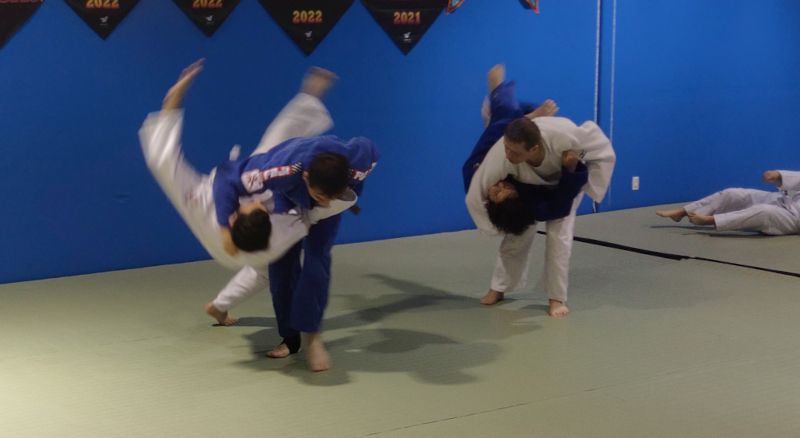Ojukan Judo Club
Teaching Kodokan Judo in Washington County since 1967.
Member of the NW Judo Yudanshakai of the
US Judo Federation.
Schedule
NOTICE - Due to schedule changes for Legacy Athletics classes, we are starting a little later setting up the dojo, and bow-in is now at 7:10 for the summer.
| Day | Doors open | Practice Hours | Open Mat |
|---|---|---|---|
| Tuesday | 6:55pm | 7:00pm - 8:30pm | 8:30pm - 9:00pm |
| Thursday | 6:55pm | 7:00pm - 8:30pm | 8:30pm - 9:00pm |
| Saturday | special |
Practice runs every week of the year, except for:
- Thanksgiving
- Week of Christmas
- Week of New Year
- snow/icy weather, closes to match Hillsboro School District’s evening activity schedule
Location
Our dojo is hosted inside Legacy Athletics
Costs
| Startup Costs: | |
|---|---|
| Ojukan membership | $75 (monthly) |
| US Judo Federation membership | $70 (annual) or $10 (monthly) |
| Judo uniform | at cost, $50-$70 |
| Special Rates: | |
| – Individual: 3 months in advance | $210 (save $15) |
| – Family: 3 or more members | $150 (3rd,4th, etc. are free) |
| – Family: 3 or more, 3 months in advance | $420 (save $30) |





